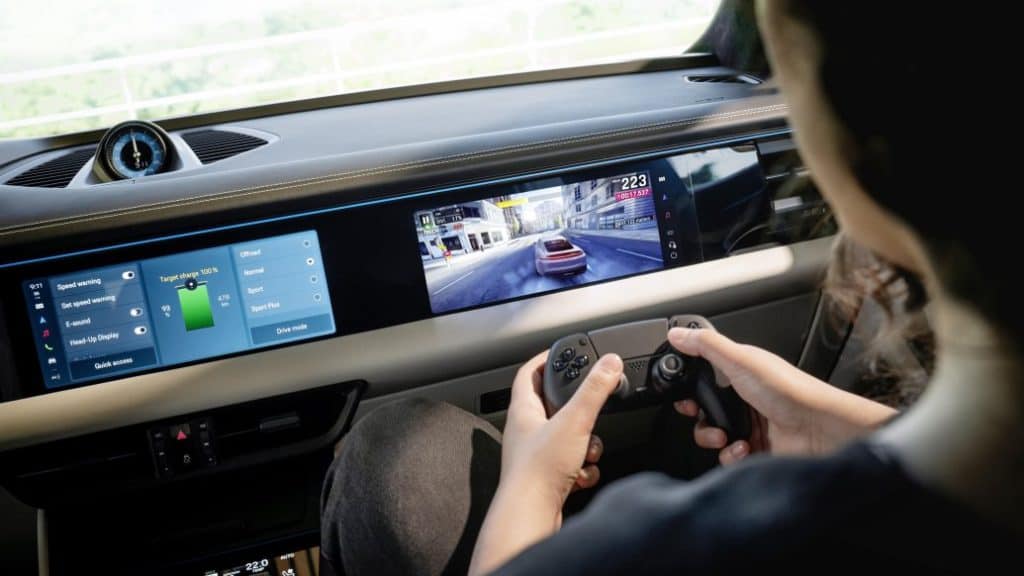
Parking, Charging, and Towing: The Trifecta of Daily Challenges
Electric vehicles promise less mechanical complexity than their combustion-powered counterparts, but the practical challenges of ownership—particularly in dense cities or for first-time EV buyers—are often found at the margins. Porsche has zeroed in on three areas for improvement: parking, charging, and towing.
For parking, the Macan now integrates a more advanced sensor and camera array with software designed to predict, visualize, and execute tight maneuvers with less driver input. The system builds on the existing suite of ultrasonic sensors and cameras, adding a refined interface that can suggest steering angles and warn of low curbs or hidden obstacles. In select trims, it can even manage the process autonomously, easing into parallel or perpendicular spots without the driver touching the wheel.
Charging—still a source of anxiety for many EV drivers—has received a digital facelift as well. The updated Macan provides real-time station availability through its native interface, calculates charging stops more dynamically during route planning, and integrates with Porsche’s proprietary Charging Planner to prioritize high-speed DC stations compatible with its high-voltage architecture. Owners who rely on home charging will notice subtler but equally useful improvements: more granular scheduling via the Porsche Connect app, better energy cost predictions, and enhanced compatibility with home energy management systems.
Towing, an often-overlooked use case for electric SUVs, benefits from recalibrated assistance that manages trailer sway, optimizes torque delivery under load, and provides step-by-step guidance during hook-up. For Macan buyers who use their SUV for weekend gear, boats, or small campers, the feature is a nod to practicality without diluting Porsche’s performance DNA.
The Digital Cabin Evolves
Inside, the changes are less about visible hardware and more about how the driver interacts with the car. Porsche has refined its digital ecosystem to reduce layers of menu diving while expanding what the system can do. The 2025 Macan introduces a smarter voice interface, capable of understanding more natural language and recognizing commands that blend multiple functions: “Find me a fast charger near my next stop and precondition the battery” is now a single request rather than a series of taps.
The Porsche Connect app, a companion for many Macan owners, has also gained greater depth. Beyond remote climate control and charge management, the app now offers predictive maintenance reminders, more detailed trip history with energy consumption breakdowns, and integration with select third-party services that bring streaming media, navigation, and even concierge features directly into the dashboard.
Entertainment sees a notable upgrade as well. Streaming video services are now supported while the vehicle is parked—intended for those charging sessions on long trips—and the audio system, developed in collaboration with Porsche’s usual high-end partners, benefits from improved acoustic tuning and expanded content streaming options. For passengers, particularly in the rear seats, the result is a cabin that feels less like a static waiting room during stops and more like a connected lounge.
An SUV for the Evolving Porsche Customer
The Macan has always served as Porsche’s bridge between sports car heritage and broader-market appeal. It attracts buyers who might never set foot on a racetrack, but who want an SUV that handles better than the average crossover and carries a badge associated with engineering excellence.
With the shift to electric power, that role becomes even more critical. The new Macan must satisfy drivers eager to embrace zero-emissions mobility while convincing them that Porsche’s values—precision, performance, and premium craftsmanship—remain intact.
These latest upgrades suggest Porsche is listening closely to how its EV customers actually use their vehicles. Data from early adopters showed that convenience features like assisted parking and intelligent charging routes were among the most requested improvements. Likewise, as towing and road-trip utility rise in importance for electric SUVs, the Macan’s new capabilities aim to expand its versatility without compromising its sleek, performance-oriented design.
The Broader Context: Digitalization as Luxury
Luxury in the automotive world has long been associated with tangible materials: fine-grain leather, hand-stitched dashboards, and rare woods. Increasingly, however, the battleground is digital. A luxury car is now expected to seamlessly sync with smartphones, offer a personal assistant that doesn’t frustrate, and deliver updates that add capabilities over time rather than erode them.
Porsche’s approach with the 2025 Macan reflects this new paradigm. By leaning on software updates, app integration, and advanced driver assistance, the company can enhance the ownership experience continuously. Features introduced this model year may not remain static; Porsche has already hinted that select systems, including some autonomous parking features and digital services, could evolve via over-the-air updates.
A Subtle, Strategic Evolution
The 2025 updates do not radically alter the Macan’s identity—it remains a low-slung, sport-tinged SUV with sharp handling and a premium interior. But they underscore where the luxury EV market is heading: toward an ecosystem where the hardware is only half the story, and the software determines how satisfying the vehicle feels in daily life.
For Porsche, this is less about chasing headline-grabbing range numbers or screen sizes, and more about refining the experience for the people who already love the brand. Parking without drama, charging without frustration, towing without guesswork, and a cabin that feels like an extension of your digital life—these are the quiet luxuries that matter when the commute replaces the race circuit.